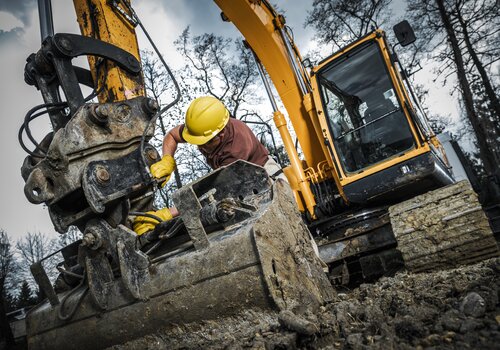Asphalt paving is a delicate process that requires precision, timing and the right materials. But when extreme temperatures come into play—whether it’s scorching heat or freezing cold—it adds another layer of complexity. If you don’t adjust your approach, you might end up with cracked pavement, poor adhesion or premature deterioration.
So how do you make sure your asphalt paving project holds up under extreme weather? Let’s break down five essential tips to keep your pavement strong and durable, no matter the temperature outside.
1. Choose the Right Asphalt Mix for the Temperature
The type of asphalt mix you use plays a huge role in how well your pavement holds up. Different mixes have varying compositions of aggregates, binders and additives that affect their flexibility and durability in specific climates.
Hot Temperatures: Opt for a mix with a firmer binder that can withstand high heat without becoming overly soft or sticky. This prevents excessive rutting and deformation.
Cold Temperatures: A mix with a more flexible binder works best, as it can handle freeze-thaw cycles without cracking. Cold weather mixes often contain anti-stripping agents to improve adhesion.
If you’re working in an area with extreme temperature fluctuations, consult with a materials expert to determine the best mix for your specific project.
2. Monitor Surface & Air Temperatures Carefully
Temperature plays a critical role in how asphalt behaves during installation. If it’s too hot, the asphalt may become difficult to compact properly. If it’s too cold, it won’t bond as well to the underlying surface.
Hot Temperatures: Keep an eye on asphalt temperature and avoid laying it during the peak heat of the day when direct sunlight can cause excessive softening.
Cold Temperatures: Make sure the ground temperature is at least 50°F (10°C) for proper adhesion. If temperatures drop below this, the asphalt may cool too fast before compaction is complete, leading to weak spots.
In addition, heat islands – larger cities and urban areas with more pavement and limited greenery – experience higher temperatures than the surrounding areas, making an accurate temperature reading crucial for workers and pavement processes. Solutions like increasing vegetation and introducing cool pavements can be helpful, according to the United States Environmental Protection Agency (EPA). Using infrared thermometers or temperature probes can help ensure your asphalt mix is at the right temperature before installation.
3. Adjust Your Paving Schedule & Workflow
The time of day and overall workflow matter when paving in extreme temperatures. For best results:
In Hot Temperatures: Start paving early in the morning or later in the evening when temperatures are cooler. This prevents overheating of the asphalt and makes compaction more manageable.
In Cold Temperatures: Work quickly and efficiently to prevent premature cooling. Consider using heated transport trucks to keep asphalt at the ideal temperature while transporting it to the site.
Also, avoid unnecessary delays during installation. The longer asphalt sits before compaction, the greater the risk of issues like raveling or poor bonding.
4. Use Proper Compaction Techniques
Compaction is the key to creating a strong, long-lasting asphalt surface. In extreme temperatures, improper compaction can lead to weak spots, cracks or uneven surfaces.
Hot Temperatures: Rollers should be adjusted to avoid excessive kneading, which can cause asphalt displacement. Keep the roller drums moist to prevent material sticking.
Cold Temperatures: Use steel-wheeled rollers to achieve uniform compaction and ensure the rolling process happens immediately after laying the mix to retain warmth.
If temperatures are extreme, additional rolling passes may be needed to ensure proper density and surface integrity.
5. Implement Protective Measures to Prevent Damage
Once the asphalt is laid and compacted, the job isn’t over—protection is key to longevity.
Hot Temperatures: Use cooling agents or temporary water misting to prevent premature oxidation. Avoid vehicle traffic until the pavement has fully set to prevent impressions.
Cold Temperatures: Apply sealants to protect against freeze-thaw cycles. If necessary, use insulating blankets to prevent rapid cooling in extremely low temperatures.
By taking extra precautions, your asphalt pavement will stay durable and resistant to extreme weather conditions for years to come,
Get the Job Done Right in Any Temperature
Extreme temperatures don’t have to compromise your asphalt paving project. By selecting the right mix, monitoring temperature, adjusting workflow, ensuring proper compaction and implementing protective measures, you’ll keep your pavement in top shape—whether it's blazing hot or freezing cold.
Want to pave smarter, not harder? Discover how cutting-edge tools are transforming the paving process in our article: Technological Advancements to Improve Paving Quality. Learn how to overcome common challenges and boost your project’s durability and efficiency. Share this with your crew or bookmark it for your next jobsite briefing.
Photo credit: SHUTTERSTOCK.COM/KNELSON20












